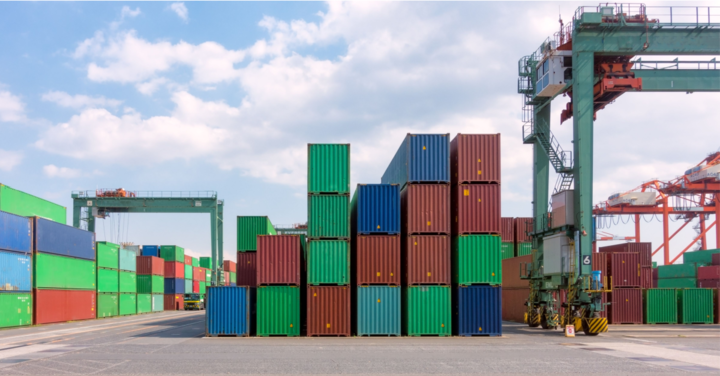
Drayage shipping is a small step in the transportation network, but it can be one of the most important to many supply chains. Lack of planning and visibility can lead to unexpected delays or disruptions often cause headaches for businesses, not to mention the high expenses that may arise from demurrage and/or detention. Conquering the drayage process is necessary if companies want to thrive: North America has 60 million drayage movements yearly, and the drayage market size is over $50 billion.
An essential step is figuring out what your drayage needs are and the nuances of different types of drayage. This article explains those different methods, the top challenges companies encounter in drayage, and how Port X Logistics helps you navigate any drayage shipping obstacles by expediting delivery of the containers once they hit the shores in the United States or Canada.
What is Drayage?
Drayage shipping, whether “the first mile” or “the final mile,” is the movement of containers by truck connecting the global supply chain. Dray shipping is frequently from a port or intermodal facility to its next destination, typically within the same city or area. Drayage trucking links the different shipping modes, often occurring just before or after ocean or rail shipping.. Drayage may involve moving freight to/from container ships, warehouses, distribution centers, or rail yards.
Dray shipping, while a short part of the process, is still fraught with challenges, such as the chance of poor visibility, unreliable capacity, reshuffling issues, and drayage fees that accumulate quickly. To handle these obstacles, it’s vital to comprehend the different types of drayage services and select the one that best fits your needs.
The 4 Types of Drayage Services
Drayage shipping in North America is divided into four categories: local, transloading and trucking, long-haul expedited, and domestic/international. Here’s more on what each type entails:
1. Local Drayage
Drayage is cargo movement over small distances, but it can still encompass transporting freight to a different city or state or even internationally. Local drayage is for moving goods within the same metropolitan area without focusing on any long-haul movements. It often involves transporting goods within a specific area, such as a port, rail yard, or another intermodal facility.
2. Drayage, Transloading, and Trucking to Final Delivery
Drayage, transloading and trucking occur after the initial cargo pickup and are the next steps of the journey in transporting freight to its final destination. Transloading provides flexibility by moving cargo from one mode of transport or equipment to another, such as from an ocean container to a truck. Transloading can occur to expedite cargo going longer distances, and the end user doesn’t have the time for the cargo to be railed inland. It is also needed if the cargo is over-dimensional and overweight. In these cases, transloading is required to make the shipment legal to transport over the road. Trucking to final delivery is the last leg of the process when cargo is moved over the road to its ultimate destination, such as a warehouse, distribution center, or customer’s doorstep.
3. Long-haul Expedited Drayage
Long-haul, expedited drayage is typically used when cargo is HOT! It’s needed for production or fulfillment needs immediately and cannot risk potential delays on the rail. Long-haul drayage can be used when time-definite delivery is needed on imports or when you must hit a time-definite port cut for exports. Expedited drayage means no time can be wasted and may require specialized equipment. If the haul goes over large distances or even international borders, more documentation, such as customs clearance, must be prepared quickly to ensure rapid delivery. The need for long-haul, expedited drayage may result from delays or congestion that have put the original delivery timeline behind schedule.
4. Domestic vs. International
Domestic intermodal freight containers are typically 20 or 40 feet long and designed for truck and rail movement throughout the United States. International containers come in lengths of 20, 40, and 45 feet, with 40 being the most common, and must meet international shipping standards. International containers must pass different regulations and customs procedures than cargo just moving across the U.S. Domestic intermodal drayage often involves smaller trucks and trailers that can better access roads and highways throughout the U.S. A 40-foot international container holds 20 pallets and may require special equipment to withstand the rigors of long ocean travel.
The Challenges of Drayage
Utilizing the correct mode of drayage shipping for your situation may alleviate some concerns, but other challenges must often be addressed in dray shipping. These may include:
- Poor visibility and a lack of transparency thwart real-time monitoring and decision-making and prevent corrective action when disruptions occur. Port X Logistics helps in this area by tracking containers on the vessel, through the port complex and customs clearance, and then arranging transport to the final destination. We do all this while “managing” the process and providing the customer with complete visibility on any device at any time.
- A lack of reliable capacity, which often leads to shortages and price volatility
- Siloed data prevents proper analytics and hampers the possibility of collaboration to uncover and share insights along the supply chain
- Volatile fuel expenses make it challenging to budget and forecast properly
- Reshuffling and reorganizing containers at a terminal or port requires coordination between multiple parties
- Drayage fees, such as demurrage, detention, chassis split, pre-pull, and drop, can add up quickly without a proper game plan
Port X Logistics Helps you Overcome any Drayage Obstacles
Drayage can be daunting, especially when facing sudden disruptions that slow down the supply chain and require quick thinking to get the delivery back on track. Knowing which type of drayage shipping to choose has proven crucial during recent volatile years and helps save time, money, and aggravation. Port X Logistics brings unparalleled knowledge to drayage shipping and offers urgent, unique problem-solving to whatever issues you face. Chat with Port X Logistics today to collaborate with it to meet all your dray shipping needs.